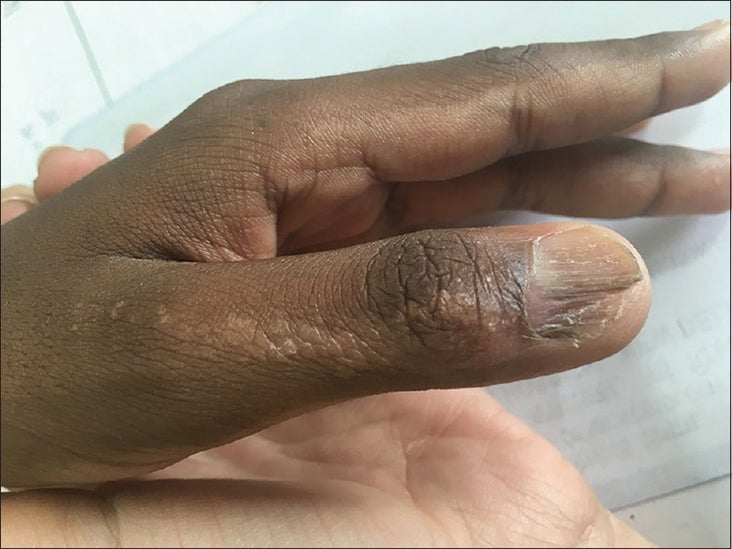Lichen nitidus: Causes, symptoms, and treatment - Medical News Today

Lichen nitidus is an inflammatory condition that causes small, shiny bumps to develop on the skin. It rarely causes other symptoms and does not usually require treatment.
The causes of lichen nitidus are unclear. Some doctors think it is an autoimmune disorder, a condition that results from the immune system mistakenly attacking healthy tissue.
In this article, we will examine the possible causes of lichen nitidus. We also look at how doctors diagnose and treat the condition.
Lichen nitidus is an inflammatory skin condition that causes tiny bumps on the skin. These bumps usually appear in clusters around the upper body.
Lichen nitidus is a
Currently, there is no cure for lichen nitidus, and what triggers it is unclear. Researchers suggest the condition may be due to an overactive immune system.
Lichen nitidus is not contagious and is unlikely to develop into something more harmful. It usually goes away without further treatment.
Lichen nitidus causes small, round bumps on the skin, which are usually 1–3 millimeters in diameter and develop in clusters. The bumps appear flat, skin-colored, and shiny.
The clusters usually
- neck
- torso
- arms and legs
- penis
- abdomen
In rare cases, it could also affect the palms, soles, and nails.
When the bumps develop around the knees and elbows, they can resemble psoriasis. Psoriasis usually causes red, flaky patches that burn or itch.
Lichen nitidus typically occurs without other symptoms. However, for some people, the bumps could be itchy.
The causes of lichen nitidus remain unknown. It is a rare condition with a similar appearance to other skin conditions, making it challenging for researchers to study.
Other inflammatory skin conditions, such as psoriasis, are the result of an overactive immune system. The cause of lichen nitidus also relates to the immune system.
The immune system typically protects the body from disease. But it can become overactive and mistakenly attack healthy tissue.
Other skin diseases, such as vitiligo, may increase a person's chances of developing lichen nitidus. Vitiligo is a skin condition that causes white patches to emerge on the skin.
Lichen nitidus could also result from an allergy. Some allergic reactions cause Langerhans cells to activate. These cells are typically present in the bumps that develop with lichen nitidus.
A doctor will examine the rash to diagnose lichen nitidus. They will ask about other symptoms, such as itching or pain, to rule out other conditions with a similar appearance, such as eczema.
Doctors might take a closer look at the bumps with a dermatoscope, a small handheld device that magnifies the skin.
Doctors may also check medical records for previous diagnoses or family histories of skin conditions. Sometimes, a doctor will use a skin biopsy to confirm a diagnosis, which involves taking a small skin sample for analysis.
People with lichen nitidus do not usually require treatment. The bumps usually go away within a
It is unclear whether specific treatments effectively reduce bumps, but a doctor may recommend:
Lichen nitidus
In severe cases of lichen nitidus, the clusters may cover large patches of skin, which may cause feelings of embarrassment and self-consciousness in some people.
Sometimes, visible skin conditions in children and adolescents could lead to them experiencing a mental health condition, such as depression or anxiety disorder.
Most cases of lichen nitidus will clear up, allowing the skin to recover fully.
A person should see a doctor if they suspect lichen nitidus. While the condition is rarely harmful, a doctor can help rule out more serious skin issues, such as psoriasis.
Anyone who experiences other symptoms with skin bumps should also see a healthcare professional. For example, a person should see a doctor if they have skin bumps with fever or itching.
Lichen nitidus is a rare, inflammatory skin condition, which causes patches of bumps around the upper body. The bumps rarely occur with other symptoms and should not trigger severe issues.
The causes of this condition are unclear. It may be an autoimmune disorder, where the immune system mistakenly attacks healthy tissues.
Lichen nitidus tends to be more common in children and young adults.
The clusters of bumps usually clear up within a few months to a year without treatment. Some people may receive medication or therapy to help with the appearance of lichen nitidus.
Comments
Post a Comment